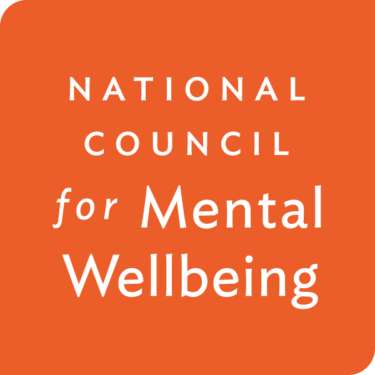Substance Use Prevention Resources
About
Our goal is to advance innovative approaches to prevent and reduce youth substance use and promote long-lasting health and wellbeing.
As such, the National Council for Mental Wellbeing in working with The Conrad N. Hilton Foundation has been a proud funder of youth substance use prevention programming. After many years of partnering with national medical and professional associations, medical educators, advocacy organizations, technical assistance providers, and research institutions, The Conrad N. Hilton Foundation launched SubstanceUsePreventionResources.org to share and transfer key learnings so future innovations are accelerated on behalf of youth today. As part of The National Council for Mental Wellbeing’s partnership with The Conrad N. Hilton Foundation the resources that were initially compiled on SubstanceUsePreventionResources.org have now been transferred and listed as resources here.
How To Use These Resources
These resources are the product of committed individuals and their many years of dedication and work within the youth substance use prevention space. The people and organizations behind the resources found on this resource listing page arrived at the youth substance prevention issue with decades of experience and knowledge to share, and the research, articles, best practices, evaluations embody the spirit of innovation and excellence that has fostered many positive outcomes for the wellbeing of youth today.
Why This Matters
Youth and young adults are especially vulnerable to developing substance use disorders, which carry the potential for life altering consequences. The likelihood of developing a substance use disorder is greatest for those who begin alcohol or other drug use in their early teens. Prevention and early intervention can help limit experimentation and reduce risky behavior before serious social and health problems develop. The Hilton Foundation and its partners remain focused on advancing innovative screening and early intervention approaches to prevent and reduce youth substance use and promote health and well-being.
The Hilton Foundation’s Youth Substance Use Prevention Program: Prevention through access to early intervention
Thirty-five percent of high school students indicate they are current drinkers, with 20 percent indicating they are binge drinkers. Additionally, 24 percent of high school students use marijuana (CDC, 2013). By the time they are seniors more than 20 percent will have used a prescription drug for a nonmedical purpose (National Institute on Drug Abuse, 2014). Substance use disorders are costly to individuals, families, and communities: binge drinking, substance misuse and addiction leads to negative health and social outcomes, can exacerbate mental health problems, and create challenges being successful in school and in the workplace. It is a key contributing factor to the leading causes of injury and death among teens.
The likelihood of developing a substance use disorder is greatest for those who begin use of alcohol or other drugs in their early teens. According to the National Institute on Drug Abuse, the majority of individuals who become addicted started using before age 18 and developed their disorder by age 20.
“The majority of individuals who become addicted started using before age 18 and developed their disorder by age 20.”
— National Institute on Drug Abuse
The Vision of the Youth Substance Use Prevention Program
Advance innovative prevention and early intervention approaches to reduce youth substance use and promote health and wellbeing.
Approach: Screening and Early Intervention
Due to youth’s vulnerability and the potential lifetime consequences of substance use disorders, the Foundation’s strategic initiative is focused on prevention and early intervention for youth age 15 to 22.
To find better ways of addressing alcohol or other drug use among youth early on, before addiction has developed, the Hilton Foundation has invested in a public health approach featuring Screening, Brief Intervention, and Referral to Treatment (SBIRT).
- Similar to other health screenings, SBIRT starts with asking a few basic questions about alcohol and drug use in a safe and confidential setting, like a physician’s office, school-based health clinic, or student health care center.
- A trained practitioner then engages the young person in a conversation to encourage them to make healthy choices and changes regarding risky activity such as substance use. Motivational interviewing (MI) is one evidence-based approach that is helpful in engaging adolescents in a conversation about how they can make decisions to maintain their health and/or decrease risky behaviors. MI is designed to support the adolescent’s autonomy, facilitate development of important life skills, and promote healthy choices.
- SBIRT is designed to address various levels of alcohol and drug use and incorporates responses that range from affirming a young person’s decision not to use alcohol and other drugs, to engaging the young person in a brief conversation about their drug or alcohol use, to referring the young person to addiction treatment services.
There is strong evidence that SBIRT is effective in reducing problematic alcohol use in adults across a variety of settings. The evidence base for youth is promising. The American Academy of Pediatrics recommends SBIRT for substance use screening as part of routine adolescent care. The National Institute on Drug Abuse’s Principles of Effective Adolescent Treatment emphasize the importance of identifying and intervening in drug use early and recommend that health care providers ask adolescents about substance use as part of routine annual medical visits. Despite these endorsements, SBIRT is rarely taught in medical or nursing schools, and its practice is largely limited to clinical settings that reach only a small percentage of the nation’s youth.
To date, The Conrad N. Hilton Foundation and The National Council for Mental Wellbeing have closely partnered with national medical and professional associations, medical educators, advocacy organizations, technical assistance providers, and research institutions to achieve three goals:
- Ensure health and other youth providers have knowledge and skills for screening and early intervention services
- Improve funding for, access to, and implementation of early screening and intervention services
- Conduct research and advance learning to improve screening and early intervention practices
Many of the resources found on this website are a result of working toward these three goals.

